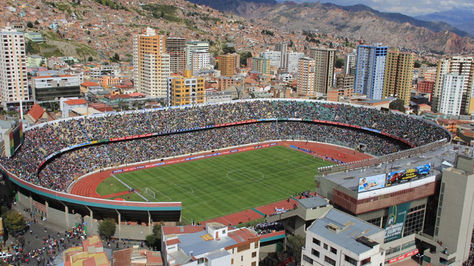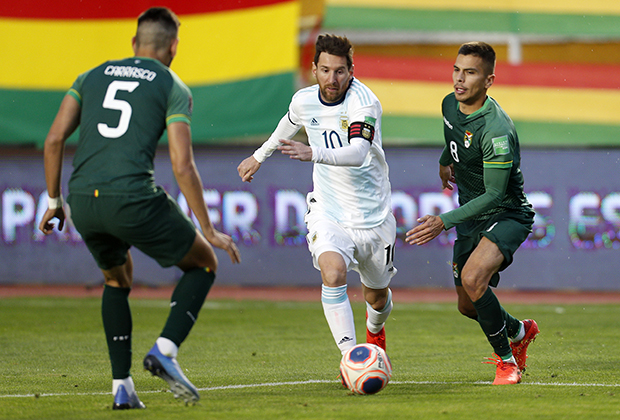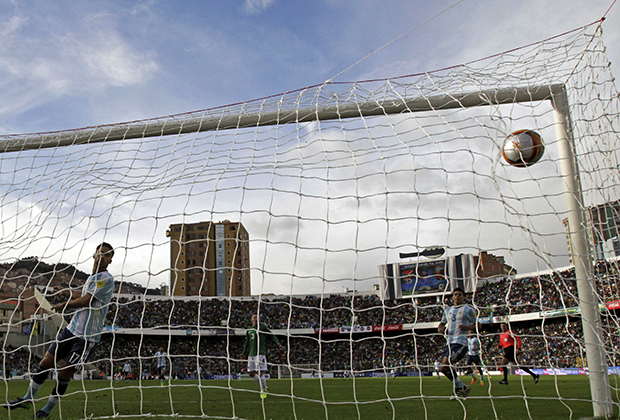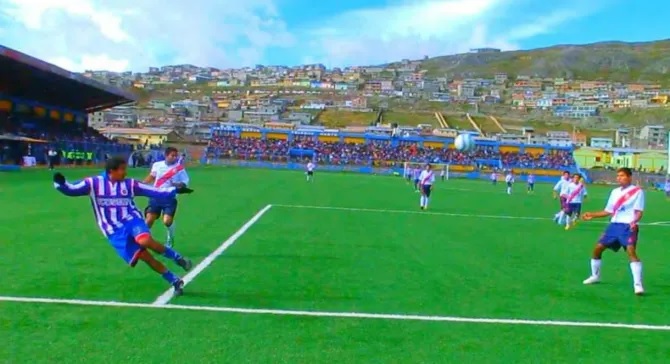Bolivia’s “sports heart”.
Hernando Siles football stadium in La Paz, Bolivia is known as the most dangerous stadium in the world. Players from different national teams have continuously complained about suffering during matches. Many people said it was difficult to breathe on the field, some felt dizzy, others vomited. Meanwhile, Bolivian players feel comfortable and this often helps them defeat higher-ranked opponents. In 2007, the International Football Federation (FIFA) banned matches at Hernando Siles, but this caused a lot of protest. Now, this arena periodically organizes tournaments, including international tournaments. What is the mystery of this dangerous stadium and why does it belong to the home team Bolivia?
Bolivia can hardly be called a football country. Throughout its history, Bolivia has only participated in the World Cup three times and each time it stopped in the group stage, the last time this happened was in 1994. In the America’s Cup they are often less lucky: according to the rules, The national team does not play in the knockout round. However, there are still exceptions. In 1963, the team became continental champions and in 1997 won the silver medal. These two achievements, achieved in the context of successive failures and without realistic ambitions, seem to be something unnatural and need to be interpreted correctly. The reason lies in the location of both tournaments. Bolivia played excellently at home to Hernando Siles. The reality is that this stadium has supported their players more effectively than anything else.

Hernando Siles in La Paz is the largest football stadium in Bolivia with a capacity of more than 40 thousand people. The yard’s foundation was built in 1927 and all work was completed in about 3 years. This stadium is named after the founder of the Nationalist party, Hernando Siles, who was in power from 1926 to 1930 and became famous as a very influential leader in Bolivia.
Hernando Siles Stadium was built to host large-scale sporting events and since its opening has been used as the home field of the national football team. In 1940, another stadium, Felix Capriles, suitable for this purpose, was opened in Cochabamba, but it was only the second most important stadium. The reason is the capacity, it can only accommodate about 10 thousand people. Now Hernando Siles is the home stadium not only of the national team, but also of the two most famous clubs in Bolivia, Bolivar and Stronggest, which play in the first division. Sometimes home matches are organized where the participating teams come from lower leagues.
The most important feature of Hernando Siles is that it is located in the Miraflores area – at an altitude of 3,601 meters above sea level. This is one of the highest stadiums in the world, where matches of professional football teams are held. For this reason, in the press, this arena is often called the scariest and most dangerous place in the world.
Jubilant victories at Hernando Siles Stadium
In 1963, Bolivia first hosted a major international tournament – the South American Championship (current name is America’s Cup – the tournament was recognized in 1975). Matches were played on both Hernando Siles and Felix Capriles. The championship is played in one round, with no knockout rounds. The Bolivian national team won first place in the final group thanks to victories over the teams of Peru (3:2), Paraguay (2:0), Argentina (3:2) and even Brazil (5:4).Most of the teams This match will take place at Hernando Siles Stadium.
In 1997, the country once again became the host of the continent’s main tournament. The Championship now consists of a group stage and a series of knockout matches. Bolivia became the team with the best performance in group B, surpassing Argentina, Paraguay and Chile. It should be added that in the quarterfinals, at Hernando Siles Stadium, Bolivia defeated Colombia (2:1). Also at that stadium, in the semi-finals, they also defeated Mexico (3:1). And only Brazil in the final was too difficult for the tournament’s host Bolivia with a score of (1:3). How Brazil overcame the curse of this arena, is a mystery.
In fact, during the period of a series of outstanding achievements from 1963-1997, Bolivia has never had a result comparable to the above victories. Bolivia’s achievements in home matches do not stop there. In 2001, the team took revenge on Brazil, and in 2009 they scored 6 goals against Argentina. And in qualifying for the 2006, 2010 and 2014 World Championships, Bolivia recorded 10 home wins and 8 draws. In away matches the results became much worse with 2 draws and no wins.
The statistics still speak for themselves. During the 2018 World Cup qualifiers, Bolivia lost all away matches, but won four wins at home, including against the national teams of Argentina and Chile. Bolivia drew with Brazil at Hernando Siles Stadium but were defeated away from home with a strong score of 0:5.

“It’s scary to play here”
Bolivia’s opponents in matches at Hernando Siles Stadium have continuously complained about poor health. By the end of the match, their performance dropped, their pulses were irregular, they had headaches and some people felt nauseous. The thin air is not saturated, and some athletes even require oxygen masks.
For example, former Venezuelan national team player Alejandro Moreno said: “The first thing you see in the locker room in Bolivia is an oxygen tank. This causes a feeling of heaviness not only physically, but also mentally. You do a few jerky movements and your lungs feel like they’re on fire.” Argentina team captain Lionel Messi also shared similar feelings after the match to qualify for the 2014 World Cup. “It’s scary to play here. Every time after accelerating, you have to rejuvenate yourself. The players have headaches and dizziness” – the striker explained. After that match, the press wrote that the Argentine player almost fainted on the field, but he himself denied this. And in 2017, during the 2018 World Cup qualifiers, among those dissatisfied was Brazilian striker Neymar. “It is inhumane to play in such conditions. The pitch, the altitude, the match – everything was bad,” he wrote.
No wonder: doctors say that when a person’s body is not ready for such high altitudes, his physical condition will lose about 30% of its capabilities. Additionally, this can be seriously harmful to health if the athlete has heart problems. It takes a few weeks to adapt, and players don’t usually get the chance to get there so early.

Bolivians are used to living and training in such conditions and they have an undeniable advantage. For their competitors, having their bodies endure harsh conditions is a serious challenge. And Moreno’s story about oxygen tanks being placed in the locker room is not a fantasy, but that it is the only way to save football players’ lungs.
The issue of safety when playing in similar conditions has been hotly discussed since 2007. At the 57th FIFA Conference, it was decided for the first time to ban the organization of tournaments in The stadiums are located at an altitude of over 2,500m above sea level. However, this was met with harsh criticism from football representatives not only in Bolivia, but also in Colombia, Ecuador, Peru, Chile and Mexico.
Argentine football legend Diego Maradona, then a friend of Bolivian President Evo Morales, called the decision absurd. According to him, if the teams have adaptation problems, they should fly to Bolivia earlier, or if that’s the case, they may not be able to play in Russia because of the cold weather. Politicians themselves are not on the sidelines. Bolivian President Morales once asked Diego Maradona what he thought about the proposed rule. Maradona replied: “Whoever wins at altitude deserves to win. People who are afraid of heights have no position.”
It is not surprising that the ban on the Hernando Siles Stadium was lifted very quickly – FIFA could not withstand the pressure and was forced to give in. This has been officially proven because the stadium has national institutions. After that, Bolivian football authorities spoke out more than once to criticize the “unfair” treatment of high-altitude stadiums in other countries.

Especially the discussion on the request to allow competition at Ecuador’s Olimpico Atahualpa Stadium, which is located at an altitude of 2,780m above sea level. This arena has been the home stadium of the Ecuadorian national team since 1951. As a result, the original control mark from 2,500m was raised to 3,000m. And the majority of banned stadiums, including the Olimpico, began to operate freely again.





